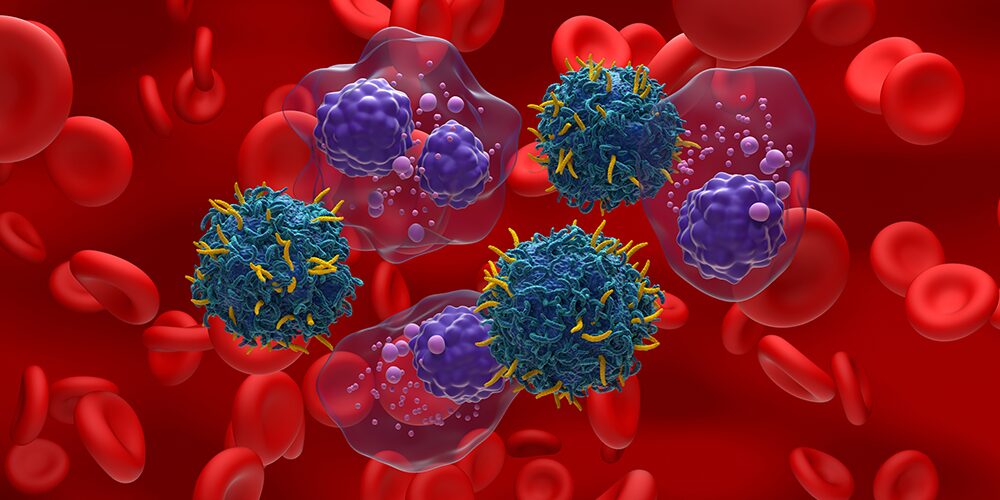
Monoclonal Gammopathy of Undetermined Significance (MGUS) is a condition where abnormal proteins, known as monoclonal proteins (M proteins), appear in the blood. Although MGUS often remains benign, understanding it is crucial as it can progress to serious blood disorders like multiple myeloma.
MGUS primarily affects people over 60, and its prevalence increases with age, making it more common in older adults. Men have a higher risk of developing MGUS. Recognizing MGUS early allows for regular monitoring, which helps detect potential complications before they escalate.
What is Monoclonal Gammopathy of Undetermined Significance?
Many people wonder, Is MGUS cancerous? While MGUS, or Monoclonal Gammopathy of Undetermined Significance, is not a form of cancer, it does involve the presence of abnormal proteins, known as monoclonal proteins or M proteins, in the blood. These proteins originate from plasma cells, a type of white blood cell. In MGUS, abnormal plasma cells produce excess monoclonal proteins, but this usually occurs without causing any immediate symptoms or health issues.
As a blood disorder, MGUS requires careful monitoring since it can progress to conditions such as multiple myeloma or lymphoma. Unlike MGUS, multiple myeloma is a cancer where abnormal plasma cells accumulate in the bone marrow, leading to organ damage. Understanding the difference between mgus vs multiple myeloma helps guide monitoring and management strategies. Meanwhile, smoldering multiple myeloma (SMM) is an early sign that someone may develop multiple myeloma (MM).
Many people ask, what causes monoclonal gammopathy and what are the early symptoms of mgus. Unfortunately, the causes remain unclear, and MGUS often lacks symptoms, making early detection challenging.
While MGUS itself is not cancer, regular testing is crucial to watch for changes. Some patients may benefit from enrolling in multiple myeloma clinical trials to access emerging therapies if MGUS progresses. A clinical research institute can provide these advanced trials and support patients with MGUS in tracking their condition’s progress.
Types of MGUS
Monoclonal Gammopathy of Undetermined Significance (MGUS) can be classified into three main types: IgM MGUS, Non-IgM MGUS, and Light Chain MGUS. Each type differs in its characteristics and associated risks of progression, which is essential for understanding the best approach to monitoring.
IgM MGUS:
In this type, monoclonal proteins known as IgM are produced. IgM MGUS is associated with a higher risk of progressing to lymphomas or diseases affecting lymph nodes, like Waldenström macroglobulinemia. It’s crucial for people with IgM MGUS to undergo regular testing, as it may be more prone to transformation compared to other types.
Non-IgM MGUS:
This type involves the production of other immunoglobulin types, such as IgG or IgA. Non-IgM MGUS is more commonly associated with progression to multiple myeloma, where abnormal plasma cells accumulate in the bone marrow. Patients with Non-IgM MGUS should closely monitor their condition, as the risk of developing multiple myeloma is somewhat elevated.
Light Chain MGUS:
In Light Chain MGUS, only light chains of the immunoglobulins (kappa or lambda) are produced rather than complete immunoglobulins. This type may lead to conditions like light chain multiple myeloma or light chain amyloidosis, which can cause organ damage due to protein deposits. Due to this risk, light chain MGUS requires careful monitoring and regular urine and blood tests.
Causes and Risk Factors of MGUS
Monoclonal Gammopathy of Undetermined Significance (MGUS) occurs more frequently with certain risk factors, primarily age, gender, and family history. MGUS risk rises significantly in individuals over 60, and men are more commonly affected than women. Additionally, those with a family history of blood disorders, including multiple myeloma, face higher chances of developing MGUS.
While age and genetics play primary roles, lifestyle and environmental factors may also contribute to MGUS. Long-term exposure to chemicals like pesticides or industrial solvents can increase the risk of monoclonal gammopathy. Research on what causes monoclonal gammopathy is still ongoing, but these environmental factors appear to influence its occurrence.
Genetic and immunological factors are also crucial in understanding MGUS. Some genetic variants may make individuals more susceptible to abnormal plasma cell production, increasing MGUS risk. Meanwhile, weakened immunity—whether from illness, age, or specific conditions—can further increase susceptibility.
Symptoms and Diagnosis of MGUS
Monoclonal Gammopathy of Undetermined Significance (MGUS) often presents no symptoms, making it difficult to detect without routine health checks. In many cases, doctors discover MGUS incidentally during blood tests for unrelated issues. Since there are generally no clear monoclonal gammopathy symptoms, people with MGUS may remain unaware of the condition.
Doctors use several diagnostic tests to detect MGUS accurately. Blood tests measure the level of monoclonal proteins (M proteins) and help assess overall plasma cell activity in the bone marrow. Urine analysis is also crucial, as it detects protein levels in the urine, which can indicate MGUS or potential progression.
Once diagnosed, regular monitoring is essential to check for any signs of progression to more serious conditions, like multiple myeloma or amyloidosis. Routine blood work helps doctors track changes in M protein levels, enabling early intervention if needed. With consistent monitoring, individuals can manage MGUS effectively and take action if any signs of advancement appear.
Potential Complications and Risk of Progression
While Monoclonal Gammopathy of Undetermined Significance (MGUS) is often benign, it carries a risk of progressing to more serious conditions. Approximately 1% of MGUS cases progress annually, potentially leading to multiple myeloma, lymphoma, or amyloidosis. Among these, multiple myeloma is the most common, where abnormal plasma cells in the bone marrow cause damage to bones, kidneys, and immune function. Lymphoma and amyloidosis, though less common, involve harmful protein deposits in organs, causing organ dysfunction.
Progression risks depend on several factors. High levels of monoclonal proteins in the blood, abnormal protein types, and specific genetic markers can increase the chances of progression. Additionally, patients with IgM MGUS, a specific subtype, may face higher risks of developing lymphoma. Regular monitoring enables doctors to detect these changes early, which is essential for timely intervention.
Read More: Is Multiple Myeloma Hereditary?
Treatment and Management Options
Since MGUS itself often remains stable, treatment typically involves regular check-ups rather than immediate intervention. Periodic blood tests monitor M protein levels, helping doctors track any changes that might indicate progression. Early detection through these check-ups plays a crucial role in managing MGUS effectively. If MGUS progresses to a related condition like multiple myeloma, treatment options may include chemotherapy, immunotherapy, and stem cell transplants.
Lifestyle modifications can also help patients manage MGUS and reduce potential complications. Regular exercise, a balanced diet, and maintaining a healthy weight support overall health and immunity. Staying proactive with health screenings, avoiding smoking, and managing any chronic conditions also benefit MGUS patients, promoting long-term well-being.
Read More: What is Bone Marrow Edema? Symptoms and Causes
Conclusion:
Monoclonal Gammopathy of Undetermined Significance (MGUS) is a condition that requires attention, even though it often remains stable without symptoms. Regular monitoring is crucial, as MGUS can progress to serious conditions such as multiple myeloma, lymphoma, or amyloidosis. Early detection through routine blood tests allows doctors to track changes, ensuring timely intervention if necessary. By adopting a proactive approach to health, including regular check-ups, a balanced lifestyle, and awareness of MGUS’s risks, individuals can manage MGUS effectively. Advances in oncology research and clinical trials provide additional options for those at higher risk, making informed care essential for long-term wellness.







